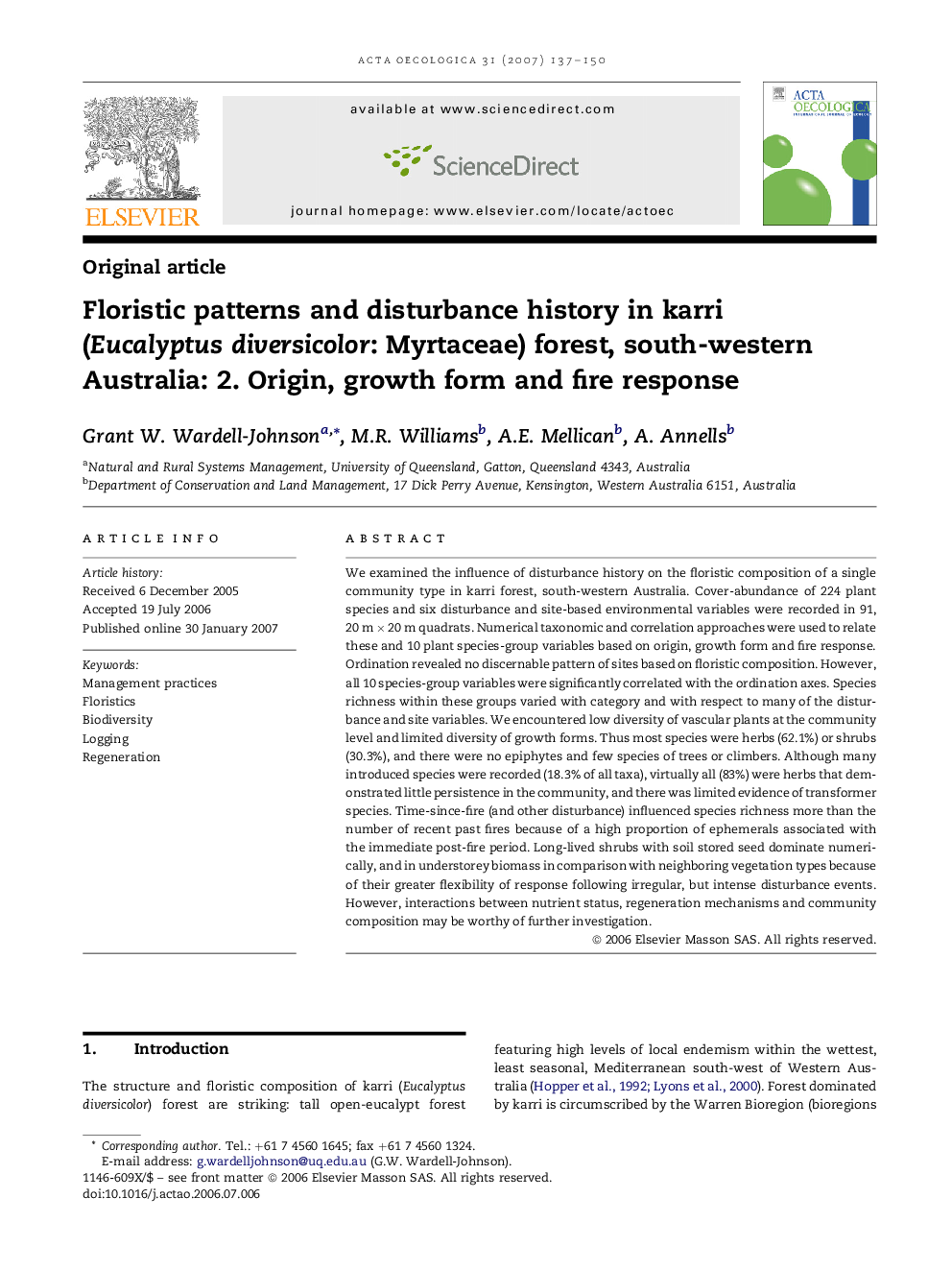| Article ID | Journal | Published Year | Pages | File Type |
|---|---|---|---|---|
| 4381583 | Acta Oecologica | 2007 | 14 Pages |
Abstract
We examined the influence of disturbance history on the floristic composition of a single community type in karri forest, south-western Australia. Cover-abundance of 224 plant species and six disturbance and site-based environmental variables were recorded in 91, 20 m Ã 20 m quadrats. Numerical taxonomic and correlation approaches were used to relate these and 10 plant species-group variables based on origin, growth form and fire response. Ordination revealed no discernable pattern of sites based on floristic composition. However, all 10 species-group variables were significantly correlated with the ordination axes. Species richness within these groups varied with category and with respect to many of the disturbance and site variables. We encountered low diversity of vascular plants at the community level and limited diversity of growth forms. Thus most species were herbs (62.1%) or shrubs (30.3%), and there were no epiphytes and few species of trees or climbers. Although many introduced species were recorded (18.3% of all taxa), virtually all (83%) were herbs that demonstrated little persistence in the community, and there was limited evidence of transformer species. Time-since-fire (and other disturbance) influenced species richness more than the number of recent past fires because of a high proportion of ephemerals associated with the immediate post-fire period. Long-lived shrubs with soil stored seed dominate numerically, and in understorey biomass in comparison with neighboring vegetation types because of their greater flexibility of response following irregular, but intense disturbance events. However, interactions between nutrient status, regeneration mechanisms and community composition may be worthy of further investigation.
Related Topics
Life Sciences
Agricultural and Biological Sciences
Ecology, Evolution, Behavior and Systematics
Authors
Grant W. Wardell-Johnson, M.R. Williams, A.E. Mellican, A. Annells,
